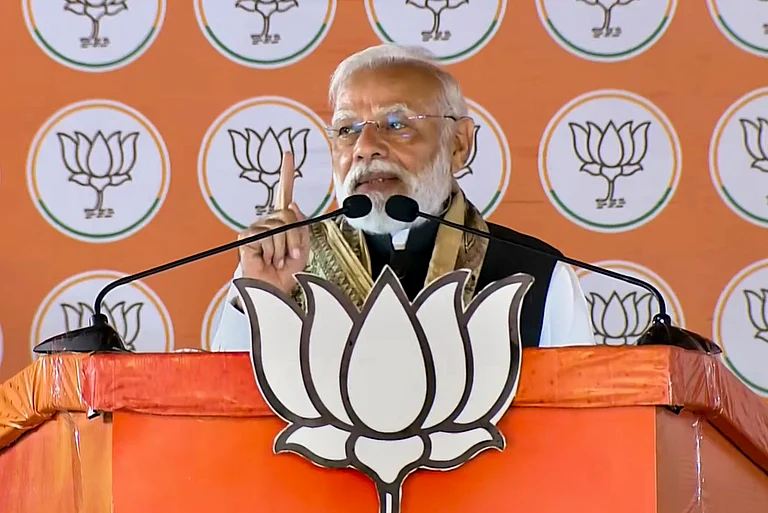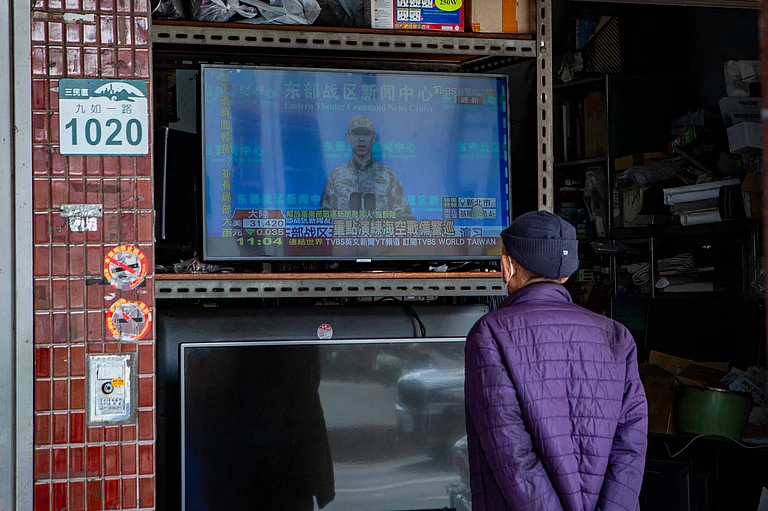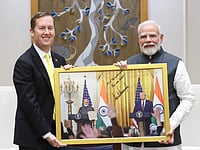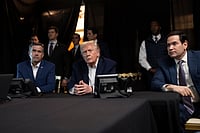Prime Minister Narendra Modi’s view that India and China have to work out the border problem to smoothen what he terms as "abnormality in ties" between Asia’s two major powers is laying out India’s position once again. It is not something new. But the PM saying it makes a difference, as it has come from the highest quarter. Foreign minister Subramanyam Jaishankar too had said so several times to his Chinese counterpart. It plays into what Prime Minister Modi had said to President Vladimir Putin on Ukraine that this is not an era of war. Differences have to be resolved through negotiations and diplomacy. This was his message to Putin on Ukraine.
At the heart of India-China tension is the unresolved boundary question, one that has haunted the relationship since independence including a full scale border war in 1962. The Doklam clash between the PLA and the Indian army in 2017 in the eastern border in Bhutan and the incursions into Ladakh in the summer of 2020, has led to bilateral ties reaching a new low. Moreover, nearly 60,000 thousand Indian and Chinese troops are still massed in the Ladakh border and can spark another military confrontation at any time. From the Indian standpoint it is important to ensure that there is complete disengagement from all "friction points" and a return to status-quo which existed before the PLA incursions to pick up the threads of normalisation ties.
China too has been ready for talks, and several round of diplomatic and field commander meetings have clearly not succeeded in reducing tensions. But diplomatic and military talks have so far not changed the situation on the ground. What is needed is political will. That can come only when there is a fresh set of political directions from the highest level. Prime Minister Modi and President Xi Jinping have to set the ball rolling and rework the terms of engagement if need be.
China’s foreign ministry spokesman has welcomed Modi’s statement. The state run Global Times has also lauded the PM in an editorial :
"Modi's interview has sent out quite positive signals regarding China-Indian relations. It corrects the recent heating-up trend of India's attitude and actions on border issues, demonstrating a willingness to pragmatically resolve problems and ease bilateral relations," it said in an edit-page piece, after Modi’s interview to Newsweek, the US weekly magazine.
What does the positive response from China mean? It is well known that China is keen to repair ties with India. China’s growth engine is faltering, and Chinese business is losing up to $100 billion each year in profits since India slapped a ban on several Chinese companies after the 2020 military confrontation. But as a former diplomat points out, China wants peace on its own terms. "China is not wanting to give up anything. For them - it is all one sided. Only gains for themselves. It will take time. PM only making a very simple statement. Reading it out of context - will be silly."
Harsh Pant from India’s premier think tank Observer Research Foundation sees the PM’s statement as a clear message from the Prime Minister that "We don’t want to disrupt relations. We are keen to engage." But as Pant says, the terms of engagement will have to be set down. "China has to pull back its troops, it has done so in some areas not in all. Much will depend on how far China is willing to go to get back to status-quo ante. China is giving out mixed signals. Yes, it wants to normalise relations but on whose terms is the question." Perhaps if Modi comes back with an even bigger majority, the tide will turn. But what China is doing to Philippines is there for all to see.
As India is in the middle of election season, talks with China can only happen after a new government is in place. "Looks like Prime Minister Modi is returning to power for the third time. This will be an opportunity for China to rethink its relations with India," says C.Rajamohan, visiting professor at the Institute of South Asian Studies, National university of Singapore.
China wants the border problem to be set aside and to continue to build economic and other ties as it had done prior to 2022. But New Delhi clearly wants to ensure that the remaining two friction points are addressed and the PLA allows patrolling to resume in areas on the Depsang plains and in Demchok in the western sector. Troops continue to be amassed by both sides in Ladakh. Till an agreement is reached tension along the LAC will continue.
The PLA is not ready to move out of the remaining areas of Ladakh because of strategic considerations. The PLA was surprised by the Indian army’s response in Doklam where there was stiff opposition to the Chinese bid to extend a road in Bhutanese territory. Doklam lies in the tri-junction between India’s Sikkim state, China’s Chumbi valley and Bhutan’s Ha district. Since 1961, Doklam has been shown as Bhutanese territory in the map. But China also claims it and there is a dispute between Bhutan and China on this. The 2017 stand-off lasted for three months and was quietly diffused ahead of Modi’s trip to China to attend the 9th BRICS summit.
The PLA is wary of New Delhi’s growing defence ties with Washington and took note of the India-US Joint special forces. In Himachal Pradesh, the exercises took place just about 150 km from the LAC in Ladakh.The Chinese have also noted the steady upgrading of defence equipment of the Indian armed forces as well as the frenetic development of border infrastructure in both Kashmir and Arunachal. Not that India has closed the gap with the PLA and it would take some time before India can catch up with the Chinese military. The PLA is keen not to let go of its current position in Depsang and Demchok.
So while China is keen to normalise ties with India, Beijing is unwilling to go back on two of the friction points as of now. But things may change down the road in a couple of months. Xi Jinping is seen as an all powerful leader being both the General Secretary of the Communist Party and Chairman of the Central Military Commission. Yet even he cannot go against the wishes of the top PLA leadership though he has filled the army with his loyalists. There is pressure on him from various interest groups but he is unlikely to go against the advice of the PLA top leadership top brass.
The Prime Minister’s remarks on China is being interpreted in different ways. While it is clearly a signal to China, some see it as a subtle message to the US that, like you, we are ready to work with China, so don’t push us on India’s internal matters. Modi’s seeming outreach helps to project him as a Vishwaguru. What finally happens between India and China is not clear yet.





























